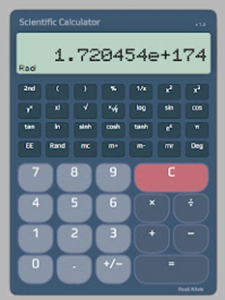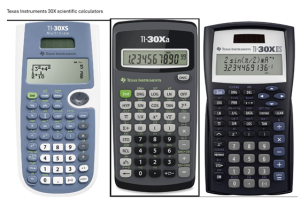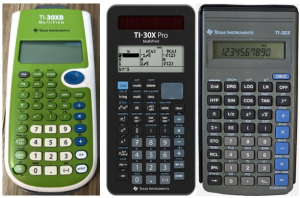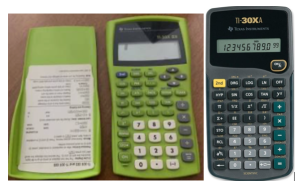Calculators
Last verified on August 22, 2025
There is a calculator embedded in the exam interface for the MP Parts 1 and 2 Qualifying exams. No calculator is needed for the MP Part 3 Oral Certifying Exam.
 To get familiar with the operation of the embedded calculator, please use the practice exam link in myABR. Once you have registered for the exam, a link to the practice exam will appear on your Cognitive Expertise page. If you have not registered for the exam, you can download the calculator as a Chrome extension here: Chrome Scientific Calculator.
Candidates can also use one of the following Texas Instruments calculators:
To get familiar with the operation of the embedded calculator, please use the practice exam link in myABR. Once you have registered for the exam, a link to the practice exam will appear on your Cognitive Expertise page. If you have not registered for the exam, you can download the calculator as a Chrome extension here: Chrome Scientific Calculator.
Candidates can also use one of the following Texas Instruments calculators:


 No notes, including manually programmed formulas, will be allowed in the testing area. If the calculator has notes and/or formulas printed on it, or includes any other information, it must be removed or covered by solid colored tape.
As has always been the case, absolutely no other personal electronic, computing, or calculator devices are permitted in the exam area. If you are unable to purchase a handheld calculator, it may be helpful to download the Chrome extension prior to the exam, so you can practice with it.
No notes, including manually programmed formulas, will be allowed in the testing area. If the calculator has notes and/or formulas printed on it, or includes any other information, it must be removed or covered by solid colored tape.
As has always been the case, absolutely no other personal electronic, computing, or calculator devices are permitted in the exam area. If you are unable to purchase a handheld calculator, it may be helpful to download the Chrome extension prior to the exam, so you can practice with it.
Exercises for calculator practice
The following exercises are not indicative of actual questions on the ABR exam. They are intended to help candidates practice with the calculator. Candidates are encouraged to try other examples of calculations that would arise as a routine part of their daily work.- Use of ln function:
- Use of Sin function:
- Use of Hyperbolic functions:
- Finding cube roots:
- Exponential function:
- Exponential function and use of memory:


